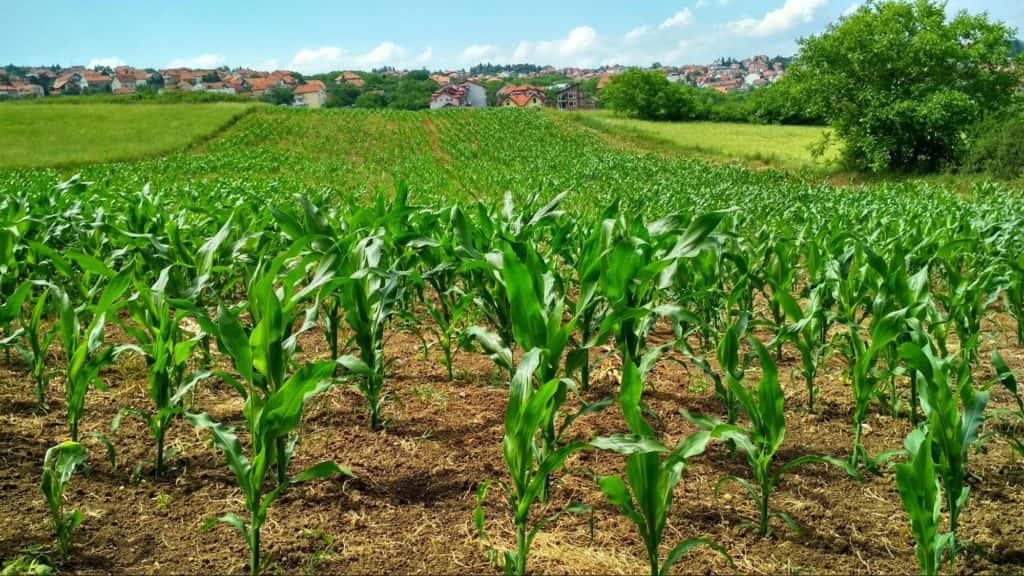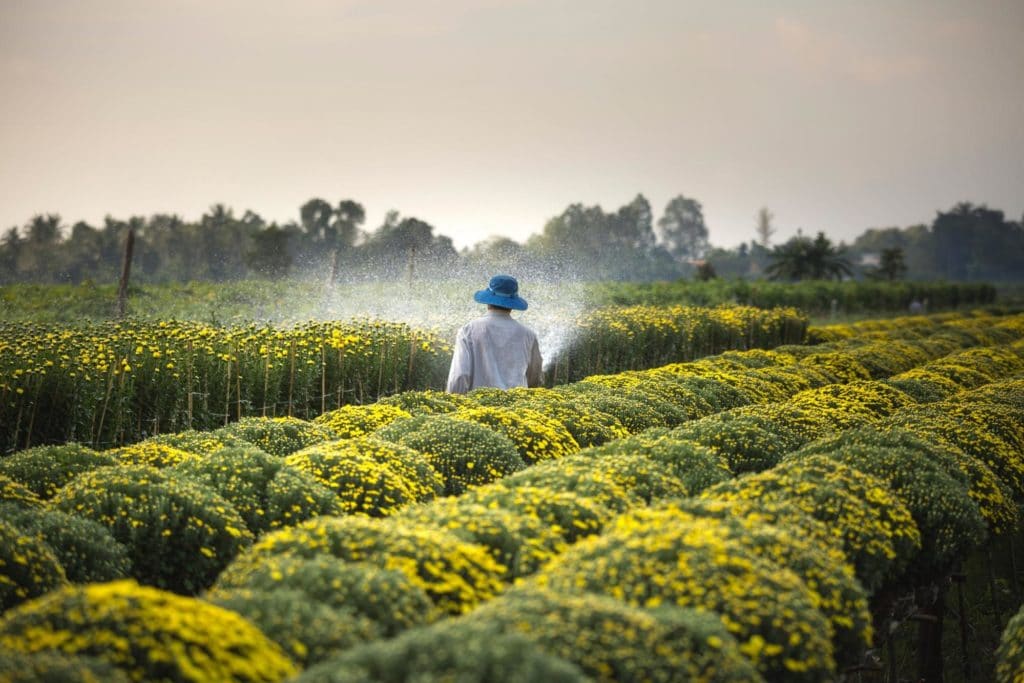In a world where climate change and environmental sustainability have taken the center stage in both political and economic discourse, the term “green revolution” might sound to many like a recent idea in an increasingly eco-conscious political environment.
Many attribute the idea of a green revolution to a combination of environmentally conscious efforts taken on by governments and individuals, and while this interpretation of a “green revolution” is certainly more relevant to the times we’re living in, the history of this concept dates as far back as the ’40s and comes with great social and economic advances — and according to some critics, dramatically less-than-ideal environmental consequences.
The Green Revolution has been one of the most important events of the 20th century and its effects on our society are still felt today, for better and for worse.
In this article, we’ll go back in time to provide an in-depth look into the Green Revolution, its policies, the impact it’s had all around the world, and how this revolution has changed its methods (but not its core nature) in the present day.
The impact of Norman Borlaug
Who is Norman Borlaug? While he may not be recognized as a household name, his research has undoubtedly changed the world forever, winning him a Nobel Peace Prize in 1970.
Now hailed as the father of the Green Revolution, Norman Borlaug was born in the United States’ midwest in 1914. He became fascinated with the issue of poverty from a young age and began seeking to use his academic knowledge in agricultural production and plant pathology to improve crops and yields in developing nations, starting with his move to Mexico in the ’40s.
Research and breeding of new wheat crops in Mexico
What Borlaug saw among the poor farmers of the country was a heartbreaking lack in the food supply, utterly depleted soils, and widespread poverty.
At that time, wheat production was the main issue for Mexico. Plagued by disease from chemical fertilizers, wheat crops were failing to produce consistently high yields to meet the high demand for such a fundamental ingredient for the population’s diet. Through his 16 years of work in Mexico and plenty of trial and error, Norman Borlaug and his team eventually developed new high yielding, disease-resistant wheat varieties that transformed Mexico from a major importer of wheat to an exporter for the rest of the world. More importantly, these new varieties of wheat and the improved crop management practices radically transformed what agricultural production looked like in Mexico throughout the ’40s and ’50s, leading to improved food security and poverty relief for the struggling region.
Rice crops in India and the International Rice Research Institute
Borlaug’s work didn’t end there, as he took all that he has learned to start the development of high-yielding wheat and rice crops in other parts of the world.
During the ’60s, India and Pakistan saw an increased food production thanks to the introduction of new rice varieties in the region. This was made possible by even more groundbreaking breeding technologies that applied a Chinese dwarfing gene to the Philippines’ tall varieties of rice crops at the International Rice Research Institute (known as rice ir8), resulting in new varieties of rice that would resist adverse weather conditions and the effects of fertilizers and pesticides. The introduction of dwarf rice varieties, combined with similar efforts concerning wheat crops, led to the tripling of wheat harvests in India and to a miraculous halt to creeping famine in the country, despite the rapid population growth experienced by the region.
Going a step further, it is estimated that the 1960s -1970s transformation of Asian agriculture ushered in by Borlaug’s green revolution almost banished famine from the entire continent, saving billions of lives in the process.
The key technologies of the Green Revolution
Looking at these incredible results, we can divide the key technologies that define the green revolution into three core sectors: irrigation, development of modern pesticides and fertilizers, and genetically developed crop varieties.
Droughts and general lack of water was arguably the main problem affecting the underdeveloped regions Borlaug decided to tackle throughout his work. In order to make these harsh climates more forgiving to crops, a total change in the use of water for irrigation was in order. Drip irrigation was one of the new methods developed during the Green Revolution, a technology that managed to save water by allowing water to drip at a slow and steady pace directly to the root, resulting in more sustainable agriculture.
On the opposite side of the sustainability spectrum, though crucial in the increase of efficient manufacturing, was the use of chemical-based fertilizers and pesticides. Synthetic nitrogen played a key role in cereal production by increasing crop yields and the overall health of cereal crops, albeit sacrificing environmental sustainability in the process — chemical fertilizers are one of the main issues affecting our waterways to this day.
Another key technological innovation that transformed agriculture during the Green Revolution was the use of genetically improved seeds, which developed hybrid crops more apt to harsh climates, more responsive to fertilizers, and overall more high-yielding and efficient. While the term GMO might get a bad rap today, the positive impacts these practices have had on global agriculture and production is undeniable!
The effects of the Green Revolution on developing countries, poverty, and the environment
The impact of the Green Revolution on Asian and Latin countries has been enormous, but the effects that these new food technologies have had on the “bigger picture” is even greater.
The Green Revolution has permanently changed the way that institutions see food production, transforming what was once a matter of self-subsistence into a strategy for achieving economic growth and reducing poverty. The widespread adoption of Green Revolution practices has contributed to the decrease in food prices and the increase in average caloric availability, resulting in innumerable health benefits not only for the poor but for the rest of the world as well.
The environmental pros and cons of the Green Revolution
The Green Revolution has not only impacted economics and advanced the rise of India, Mexico, the Philippines, and China on the world’s stage, but also the environmental effects of food production in multiple ways.
While the adoption of Green Revolution technologies has avoided the conversion of thousands of hectares of land into agricultural cultivation by making the production of food more efficient, the increase in inorganic fertilizers and modern pesticide use, the rising need for more crop irrigation and water, and the unintended pollution of waterways have accelerated the negative impacts of agricultural production on the environment. Still, looking at the environmental pros and cons from an objective standpoint, we can see that the Green Revolution also saved precious land from conversion to inefficient agriculture (a major source of greenhouse gas emissions) and allowed for the regeneration of forest cover, all the while saving water with innovations like drip irrigation.
Borlaug’s work is, to this day, not without its critics, as we can all recognize that a revolution of this size and ambition was bound to create some problems of its own.
It must be said, however, that the environmental consequences were hardly caused by the Green Revolution technologies on their own but rather, by the policy environment that came with them. Unsustainable expansion in areas that could not sustain such a high degree of cultivation, at least not in the long term, is just one example of a food policy that failed to consider the environmental impact of intensive agriculture.
The jury is still out on whether we should have predicted these consequences sooner, as well as whether the environmental pros and cons of the Green Revolution have managed to balance each other out in the end.
The African exception
Another major point of criticism of the Green Revolution is the initial failure that Borlaug’s innovations encountered in Africa.
It’s fair to say that Sub-Saharan Africa was the one exception to the unrelenting success of the green revolution, as its key intensification strategy was not appropriate when dealing with low human population density, poor infrastructure, and lack of agricultural resources to sustain change. There was no incentive for intensification, as cultivation land in the region was quite abundant. Small farmers relied on a huge diversity of cropping systems, with many orphan crops (tubers, tef, millet, and more) being central to the population’s food security, rather than the big threes (rice, wheat, and maize).
But while Africa might have been an exception in the ’70s, the region has started to reap the benefits of Green Revolution technology in the 21st century. Aided by improved infrastructure and renewed interest in land conservation, maize cultivation has become more central in the region, using genetically improved seeds with increased tolerance to drought to sustain unpredictable climates.
Despite some major setbacks, Green Revolution technology has started to work in some countries that are now experiencing better food security, with the best results reported in Ethiopia.
The social impact of the green revolution
While increased food security has done much to help the affected population, it has also come with unintended hefty social costs.
There were many social benefits too, of course: farmers experienced higher incomes, leading to unprecedented investment in rural economies and a sizeable rise in employment rates. Poverty in many Asian regions decreased to less than one person in three by 1995, overall nutrition improved thanks to reduced prices, and the availability of diverse products.
Critics of the Green Revolution, however, argue that owners of large farms were the only real adopters of the agricultural innovations of the green revolution, as they were the ones with the better access to irrigation water, fertilizers, and seeds, leaving small farmers behind, either unaffected or directly harmed by low prices they couldn’t compete with. Small farmers were last to adopt the methods and improved varieties of the Green Revolution, leading to a bigger gap in opportunities and income inequality.
What does the Green Revolution mean today?
So, what is the Green Revolution today and how is it still relevant to our social and economic environment?
As we’ve alluded to at the start of this article, “green” has not necessarily meant “eco-friendly” in the context of the ’60s and ’70s research and policy, even though Borlaug’s vision was heavily influenced by environmentally conscious motives such as saving water and conserving forest land. In order to repurpose his innovative thinking for this new era, some are proposing a “new” Green Revolution, more fitting to the times we are living in and able to adapt to the environmental challenges we’re facing.
The devastating effects of climate change, fossil fuels, and water scarcity require a radical shift in global agricultural systems. Countries must rework their agricultural policies to be not only highly productive but also highly sustainable, addressing food shortages and global hunger just as efficiently as the original green revolution did. That’s far from an easy task to tackle, but the development of modern agroecology could very well address the issue by transforming food systems, recycling biomass, using enhanced organic matter to treat depleted soils, and naturally enhancing biological interactions without the use of polluting chemicals.
Blessing or curse?
So, was the Green Revolution a blessing or a curse for the affected regions and the rest of the world?
Despite decades of study, the answer is still hard to assess. On one hand, these efforts have dramatically reduced poverty and food insecurity in almost all of the regions touched by Borlaug’s work and by the funding of the Ford Foundation, leading to a better quality of life that persists to this day. On the other hand, the results of the Green Revolution have been mixed when it comes to both its environmental consequences and the social changes it brought along with its innovations.
Taking a moderate approach, we can safely say that while these efforts shouldn’t be considered a total success, they have left the affected population better off than what it would’ve been otherwise, as up until the early 20th century, agricultural practices in developing regions changed very little throughout thousands of years.
The best that can be done now is to look to the future, learn from the past, and take action to develop agricultural practices that will benefit everyone, without sacrificing our planet in the process.




